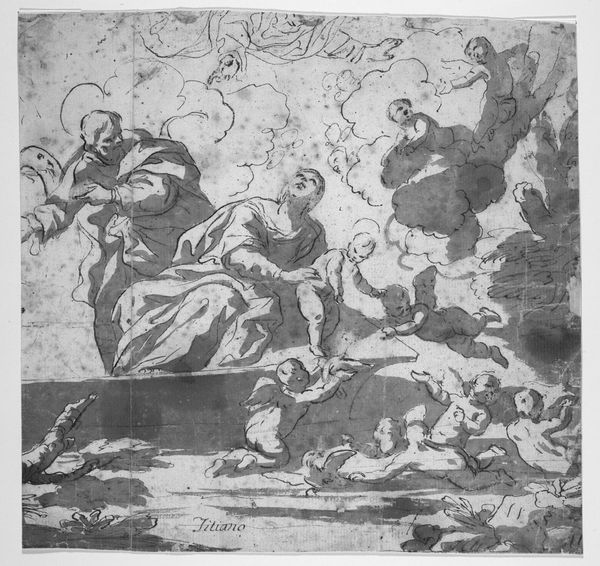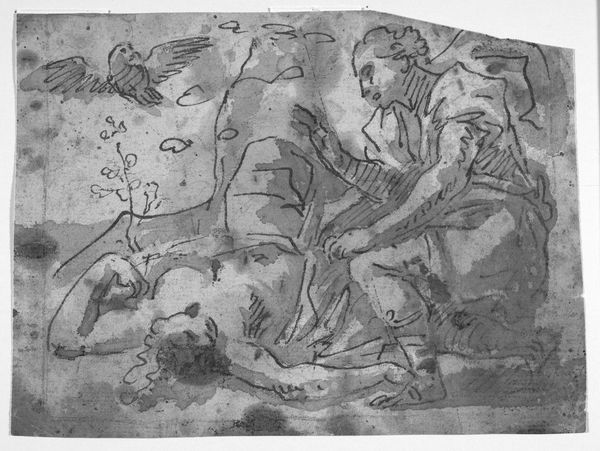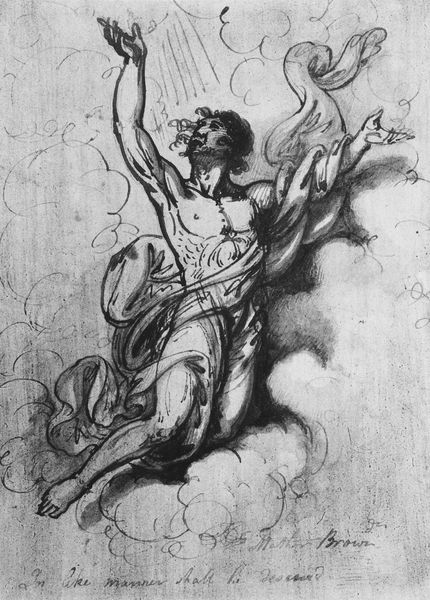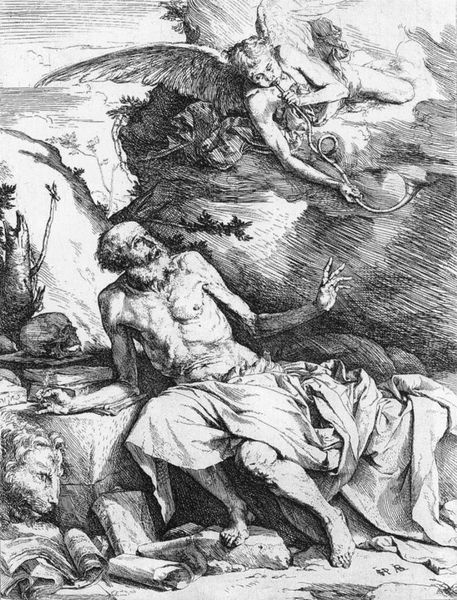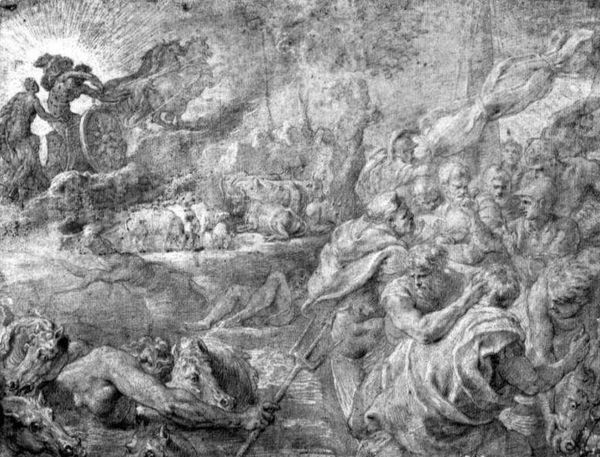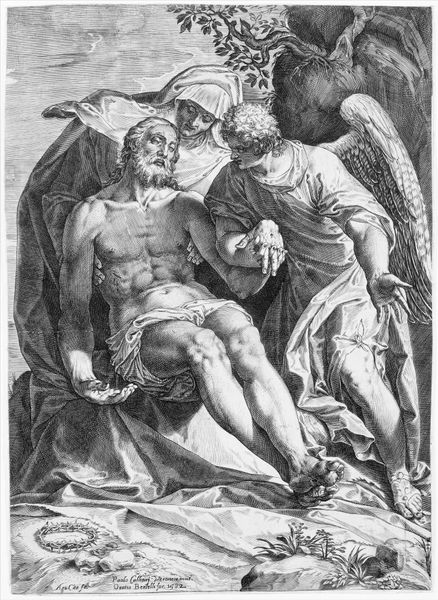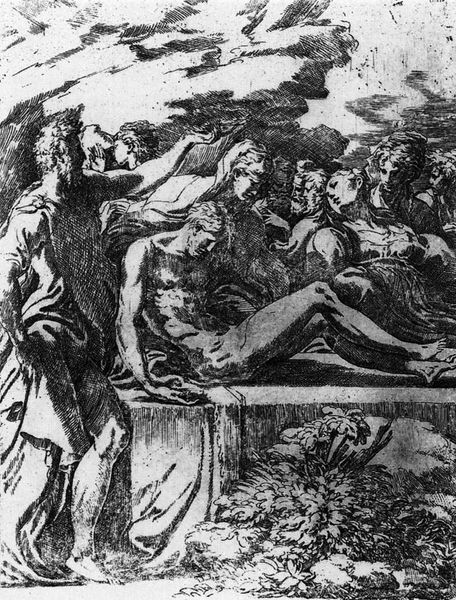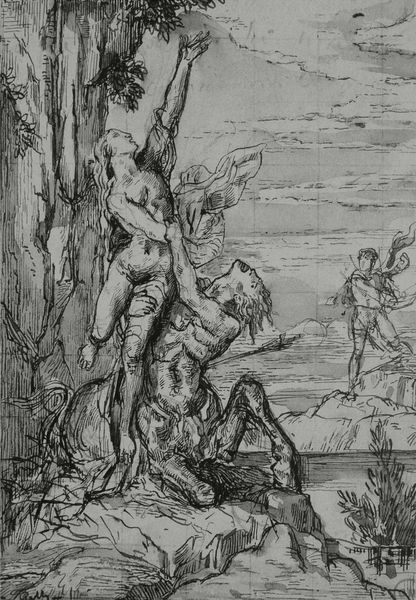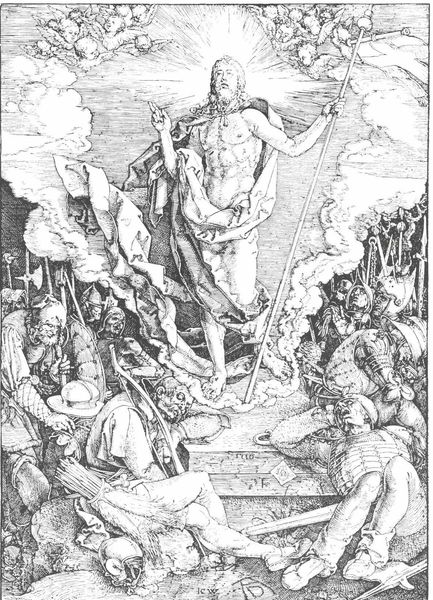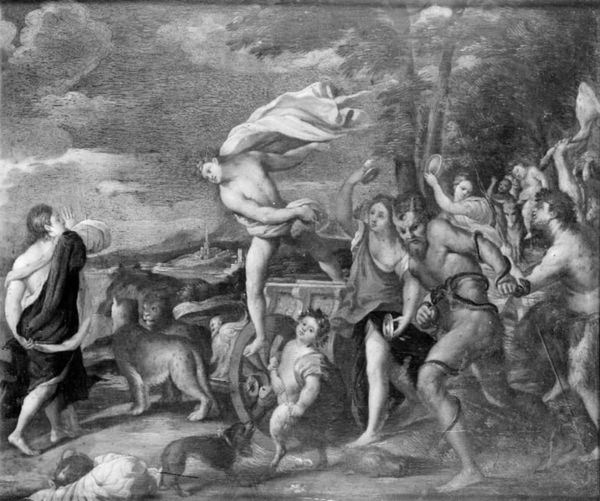
Dimensions: 29.4 x 39.2 cm
Copyright: Public domain
Curator: This ink and charcoal drawing is entitled "St. Jerome" and was created by Gian Lorenzo Bernini around 1665. I find it incredibly dynamic, despite being a monochrome work on paper. What are your initial thoughts? Editor: Raw and unrestrained. The sheer scale of the central figure, St. Jerome, juxtaposed against the diminutive Christ on the crucifix creates a visually jarring experience, immediately disrupting any sense of harmonic balance. It has an unfinished quality which makes it look very modern for its age. Curator: Bernini brilliantly captures Jerome's complex role as a protector of Christian doctrine while grappling with deep personal anguish. Note his expression and dramatically raised arms. The symbolic weight of his stance seems to deflect some unseen danger or defend a threatened faith. Editor: Precisely. Bernini's employment of stark chiaroscuro further enhances this feeling. Observe the dense cross-hatching employed to model Jerome's muscular physique versus the comparatively fainter lines depicting the angels at his shoulder. This opposition sets the two figures in conflicting dialog. What does that accomplish? Curator: The shadowy angels represent divine inspiration. This references how he labored to translate the Bible, and some traditions say an angel dictated the Gospels to him. It also symbolizes that those teachings have made Jerome tormented and strong. It reminds viewers that theological pursuit requires intense struggle and brings weighty, lifelong battles of its own. Editor: Indeed. Then there's the composition. The perspective seems skewed, with Jerome dominating the visual space. He towers over the symbol of salvation – seemingly implying that he has transcended even it? It seems a strange inversion to create devotion. Curator: It's not necessarily that Jerome is "above" the cross. Rather, his translation brought accessibility, thereby renewing it in his time and allowing continued dialogue. Remember the role of the lion as well. It stays near the book as an indication of both sacred knowledge and loyalty to spiritual disciplines. It is an affirmation of continued tradition. Editor: A provocative juxtaposition nonetheless. So much drama from an understated drawing. I find myself returning to it. Curator: And, no doubt, discovering new meanings each time. The richness of symbol and expressive power allows for such constant discoveries, indeed.
Comments
No comments
Be the first to comment and join the conversation on the ultimate creative platform.
